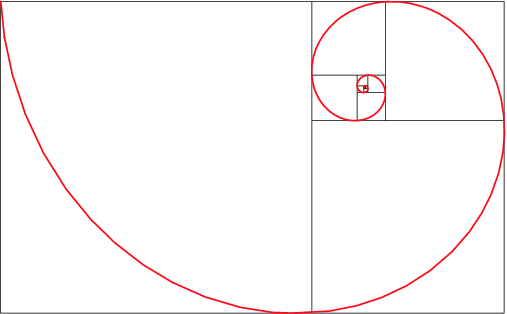Have you ever wondered how many times your listing appears in Google's organic search engine results? Want to know how effective your listing really is? How many times someone clicks on your listings and in which position your link gets clicked on?
Well, the wait is over! You can now see which keywords are performing the best and in which positions on Google!It's one thing to be listed on the first page of Google but it's a whole different ball park when your listing is actually being clicked on by potential customers.
Up until now there hasn't really been any really good tools to tell you exactly where your site is listed and how many times someone has actually clicked on your listing to get to your site.
There are some techniques and some tricks of the trade that let you know these things but nothing that most website owners/ webmasters would know.
Guess what,
No you no longer have to wonder if your listings are actually being clicked on.
Google webmaster tools now tells you what keywords your site is being listed for in their search results and in addition to letting you know which keywords they also tell you how many times your site shows up in their search results plus how many times your listing is actually being
CLICKED ON!
You can also know which positions your listings were in and how many times your listing was clicked on in that position plus so much more!
You may be shocked to see that being #1 doesn't always mean your listing will be clicked on. You may see that your listing in the 4th or 6th position is doing better than your listing in the 1st position.
This to me is excellent news as far as SEO is concerned. This will give you the opportunity to see what's actually working for you.
This new data will let you know if you need to spruce up your on page content / meta tags or change around some wordings if you find that a keyword is getting a lot of impressions but the CTR (click through rate) is at a very low rate.
This tool is also great for seeing how your branding is working. You can check and see how many times someone actually types in your business brand opposed to typing in your actual keywords. If you see that your brand name is showing a lot of impressions and click throughs, that is a clear indication that there is some buzz going on about your business and you are moving in the right direction.
Over the years I have had the opportunity to work with a lot of webmasters to help improve their keyword ranking in Google , Yahoo and Bing and increase their website traffic and conversion rate. Our packages have always included Google Webmaster Tools set up but I urge webmasters to sign up for an account more than ever now.
I have been granted permission from one of my long term seo clients (
Fleur Lilly) to use their data to show you how the new feature in Google's webmaster tools can help you with optimizing your site or improving your visibility in Google's search engine result pages (SERPS).
Below is the data for one of 358 Fleurlilly.com top search engine queries or targeted keywords. We targeted this keyword phrase for them in the beginning of March 2010. From the data (March 18,2010 to April 18,2010) , we can see that our optimization for this keyword phrase is on the right track. This keyword has generated a lot of traffic to their site and they have seen a tremendous increase in conversions for this brand, so much that they told us that they had sold out of many of their styles and have had to order close to 200 new pairs!
In the images below, you will see the number of times their site shows up in Google's search engine result pages (Impressions), the number of times potential customers clicked on their listing (Click Through Rate) and the percentage between the two.
This image shows their top search query, how many times their site showed up and the number of traffic they got for just this keyword phrase for the past 30 days:This next image shows a break down of the keyword phrase, which you can see by clicking on the + sign right next to your keyword. The data shows the position their site / listing showed up in their SERPS. It also shows how many times their listing showed and the number of times her listing / link was clicked on.
If you pay close attention you will see that her site performed better in the
3, 4, and 5th position. Guess what!?
Their site did okay on the 2nd page too! Their site showed up 1000 times and was clicked on 46 times. Not to bad for 2nd page listing. The site has showed up on the third page too but no clicks. So from their data their site performs great on the first page and still has traffic from the second page but being listed on other pages is not something that is too beneficial.
This image data shows something that is very interesting. This image shows which pages are getting the most click throughs and impressions. What was interesting about this data is that their product pages are getting the most traffic. This goes back to my comments about not abandoning your product pages. It's great to focus on your categories and main categories but definitely more beneficial when you focus on the actual product landing page.
So don't neglect your product pages. Make sure you optimize the meta tags and your on page content.
Using your data in your webmaster tools can help you improve your website by letting you know which keywords you are ranking for, and how many times your site is being clicked on. If you see that you have keywords that have a high impression amount but a low CTR and more importantly no sales. Then go back to the drawing board and change things around a bit to increase your CTR. I'll do another post to give you tips on increasing your CTR. If you have a low percentage in click throughs but your conversion is high, you can still be on the right track and just may need some minor updates.
You can also use this data to increase your branding.
If you are not getting any traffic with your business name as a keyword, this lets you know what you need to improve on as far as branding.
If branding is part of your business strategy then you will have to start focusing on building your brand through social media avenues, building business relationships with others in your industry and getting your name out there by participating in events or even partnering up with blogs.
This new feature in your Google Webmaster tools gives you so much insight and data that you definitely want to look into if your organic listings are important to you and your business online success in Google's search engine result pages.
Now is the time to get focused and make a decision about how serious you want to be about moving in a positive direction with your search engine optimization and website traffic needs. The tools are available to you, it's up to you to take advantage of them.
If your not sure what all the data is or how to improve your organic search engine listings. Consult with an SEO specialist.
Got any questions or comments about what you have done to improve your keyword ranking and CTR, leave us a comment, I'd love to hear from you!
Carla Phillips























